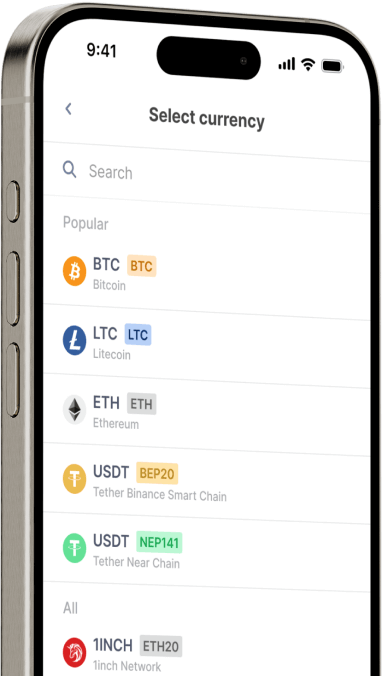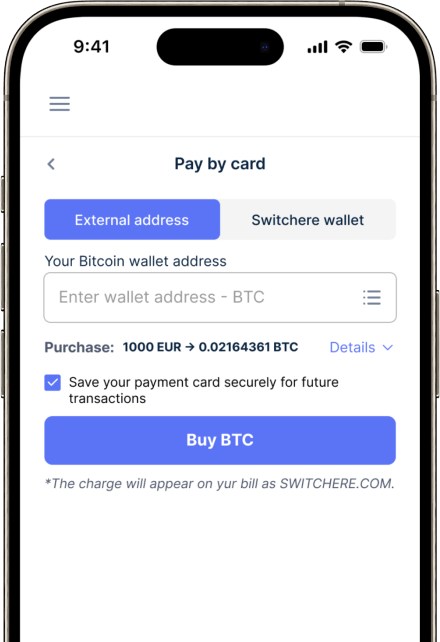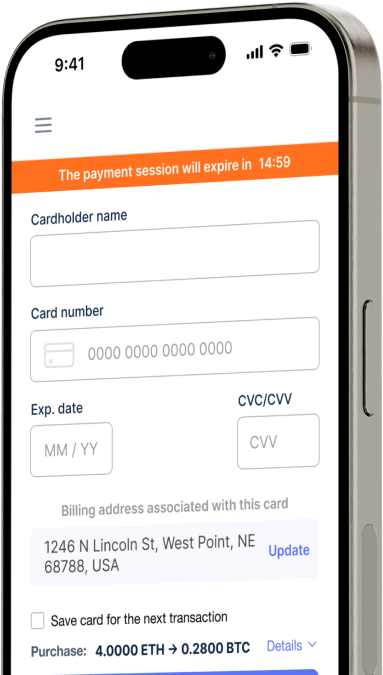Convertire
Danish Krone (DKK) in Balancer (BAL) istantaneamente
Acquistate facilmente Balancer (BAL) con Danish Krone (DKK) su Switchere e beneficiate di transazioni rapide e sicure.
Circa
Balancer (BAL)
Balancer (BAL) è un componente fondamentale dell'infrastruttura della finanza decentralizzata (DeFi), che funge da market maker automatizzato (AMM) e protocollo di liquidità altamente flessibile. A differenza degli AMM tradizionali che spesso richiedono coppie di asset 50/50, l'innovazione chiave di Balancer è l'uso di pool di liquidità personalizzabili e multi-token, noti anche come smart pool. Ciò consente a chiunque di creare portafogli auto-bilanciati o fondi indicizzati decentralizzati in cui gli asset sono detenuti in proporzioni specifiche e ponderate. Questo design non solo fornisce liquidità profonda e programmabile per i trader, ma crea anche opportunità di arbitraggio che riportano i pool alla loro ponderazione prevista, automatizzando efficacemente la gestione del portafoglio per i fornitori di liquidità sulla sua rete decentralizzata.
L'evoluzione del protocollo a Balancer V2 ha introdotto un'innovativa architettura a Vault singolo. Questo design separa la logica dell'AMM dalla gestione e contabilità dei token, migliorando notevolmente l'efficienza del gas e l'efficienza del capitale. Tutte le operazioni all'interno dell'ecosistema Balancer vengono instradate attraverso questo singolo Vault, consentendo di eseguire complesse operazioni multi-hop con costi di transazione significativamente inferiori. L'asset digitale nativo del protocollo, BAL, funge da token di governance critico. I detentori del token di utilità BAL possono partecipare alla governance on-chain, votando sugli aggiornamenti del protocollo, sulle modifiche delle commissioni e indirizzando l'allocazione delle ricompense del liquidity mining, plasmando così il futuro di questa infrastruttura Web3 essenziale.
Acquistare altre 150+ criptovalute per Danish Krone (DKK)
Altre monete per Danish Krone (DKK)
-
DKK per ZRX
-
DKK per 1INCH
-
DKK per AAVE
-
DKK per ACH
-
DKK per ALGO
-
DKK per TLM
-
DKK per ANKR
-
DKK per APE
-
DKK per NFT
-
DKK per API3
-
DKK per APT
-
DKK per ARPA
-
DKK per AUDIO
-
DKK per AVAX
-
DKK per AVAX
-
DKK per AXS
-
DKK per BADGER
-
DKK per BAL
-
DKK per BNT
-
DKK per BAT
-
DKK per BNB
-
DKK per BSW
-
DKK per BSV
-
DKK per BLUR
-
DKK per BONE
-
DKK per CTSI
-
DKK per CELR
-
DKK per CELO
-
DKK per CEL
-
DKK per LINK
-
DKK per CHZ
-
DKK per CHR
-
DKK per C98
-
DKK per COMP
-
DKK per CFX
-
DKK per PEOPLE
-
DKK per CVX
-
DKK per ATOM
-
DKK per CTC
-
DKK per CRV
-
DKK per DAI
-
DKK per DASH
-
DKK per MANA
-
DKK per DENT
-
DKK per DGB
-
DKK per DYDX
-
DKK per XEC
-
DKK per EOS
-
DKK per ETC
-
DKK per ENS
-
DKK per ETHW
-
DKK per FET
-
DKK per FIL
-
DKK per FLOKI
-
DKK per GALA
-
DKK per GNO
-
DKK per ONE
-
DKK per HBAR
-
DKK per HOT
-
DKK per HOOK
-
DKK per ICX
-
DKK per ILV
-
DKK per IMX
-
DKK per INJ
-
DKK per ICP
-
DKK per IOST
-
DKK per IOTX
-
DKK per JASMY
-
DKK per JST
-
DKK per KAVA
-
DKK per KCS
-
DKK per KSM
-
DKK per KNC
-
DKK per LDO
-
DKK per LQTY
-
DKK per LPT
-
DKK per LOOKS
-
DKK per LRC
-
DKK per LUNA
-
DKK per MKR
-
DKK per MASK
-
DKK per EGLD
-
DKK per ALICE
-
DKK per NEAR
-
DKK per XEM
-
DKK per NEXO
-
DKK per NOT
-
DKK per NMR
-
DKK per OKB
-
DKK per OMG
-
DKK per ONT
-
DKK per EDU
-
DKK per OP
-
DKK per OGN
-
DKK per CAKE
-
DKK per PAXG
-
DKK per PENDLE
-
DKK per DOT
-
DKK per POL
-
DKK per QTUM
-
DKK per QNT
-
DKK per RDNT
-
DKK per XRD
-
DKK per RVN
-
DKK per REN
-
DKK per RSR
-
DKK per RLC
-
DKK per RPL
-
DKK per SFP
-
DKK per SHIB
-
DKK per SKL
-
DKK per SXP
-
DKK per STND
-
DKK per STG
-
DKK per XLM
-
DKK per GMT
-
DKK per STORJ
-
DKK per STMX
-
DKK per SUSHI
-
DKK per SNX
-
DKK per USDT (Polygon)
-
DKK per USDT (AVAC)
-
DKK per USDT (BEP20)
-
DKK per USDT (ERC20)
-
DKK per USDT (SPL)
-
DKK per USDT (NEP141)
-
DKK per USDT (FA2)
-
DKK per USDT (TRC20)
-
DKK per USDT (JETTON)
-
DKK per XTZ
-
DKK per GRT
-
DKK per SAND
-
DKK per TFUEL
-
DKK per THETA
-
DKK per RUNE
-
DKK per TON
-
DKK per TUSD (BEP20)
-
DKK per TUSD (TRC20)
-
DKK per TWT
-
DKK per UOS
-
DKK per UMA
-
DKK per UNI
-
DKK per USDC (Polygon)
-
DKK per USDC (SPL)
-
DKK per USDC (OP)
-
DKK per USDC (BEP20)
-
DKK per USDC (AVAC)
-
DKK per USDC (ARB)
-
DKK per USDC (ERC20)
-
DKK per VET
-
DKK per VRA
-
DKK per WAXP
-
DKK per WOO
-
DKK per WLD
-
DKK per WBTC
-
DKK per WMINIMA
-
DKK per XDC
-
DKK per YFI
-
DKK per YGG
-
DKK per ZIL
Come acquistare gli Balancer (BAL)
Domande frequenti
-
Quali sono i metodi comuni per acquistare Balancer (BAL) con la Corona Danese (DKK)?
Per acquistare l'asset digitale BAL con DKK, è tipicamente necessario utilizzare un exchange di criptovalute centralizzato che funge da rampa di accesso fiat. Il processo di solito comporta la creazione di un account, il completamento della conformità KYC/AML e il deposito di DKK tramite metodi come un bonifico SEPA o una carta di debito. Una volta accreditati i tuoi DKK, puoi piazzare un ordine sulla coppia di trading DKK/BAL se disponibile, o scambiare prima DKK per una stablecoin come USDT e poi usarla per acquistare BAL.
-
Quali tipi di commissioni sono coinvolte nel trading da DKK a BAL?
Quando si convertono DKK in BAL, aspettatevi diverse possibili commissioni. In primo luogo, l'exchange di criptovalute potrebbe addebitare una commissione di deposito per i tuoi DKK, specialmente per i pagamenti con carta. In secondo luogo, c'è una commissione di trading per l'esecuzione dell'ordine di acquisto, tipicamente una piccola percentuale del valore della transazione. Infine, se prelevi i tuoi token BAL su un portafoglio digitale privato, incorrerai in una commissione di transazione blockchain, nota come gas fee sulla rete Ethereum, che può fluttuare in base alla congestione della rete.
-
Dopo aver acquistato BAL con DKK, qual è il modo più sicuro per conservare i token?
Per una sicurezza ottimale, è vivamente consigliato spostare i tuoi token BAL dall'exchange di criptovalute a un portafoglio digitale non-custodial in cui controlli le chiavi private. Per detenzioni a lungo termine o importi significativi, un portafoglio hardware offre la migliore protezione contro le minacce online. Poiché BAL è un token ERC-20, assicurati che il tuo portafoglio scelto supporti la rete Ethereum. Esegui sempre il backup della tua frase seed in modo sicuro e non condividerla mai.
-
Qual è il ruolo del token Balancer (BAL) nel suo protocollo DeFi?
Il token BAL è il token di governance nativo del protocollo Balancer, un market maker automatizzato (AMM) leader nello spazio DeFi. Possedere BAL conferisce agli utenti il diritto di voto su proposte che modellano il futuro del protocollo, come le strutture delle commissioni e l'inserimento in whitelist di nuove pool. Viene anche distribuito come ricompensa ai fornitori di liquidità che contribuiscono con asset alle pool di Balancer, incentivando la partecipazione al suo ecosistema di portafoglio autobilanciato costruito sulla blockchain di Ethereum.
-
In che modo l'architettura Vault di Balancer avvantaggia trader e fornitori di liquidità?
L'esclusiva architettura Vault di Balancer separa la contabilità e la gestione dei token dalla logica AMM. Per i trader, ciò significa che le operazioni che coinvolgono più pool di Balancer possono essere eseguite in un'unica transazione altamente efficiente in termini di gas. Per i fornitori di liquidità, semplifica il processo di creazione di pool personalizzate e ponderate e migliora l'efficienza del capitale, poiché il Vault detiene e gestisce tutti i token di tutte le pool, riducendo l'overhead transazionale per il ribilanciamento e gli swap.
-
È possibile scambiare direttamente DKK con BAL all'interno del protocollo Balancer stesso?
No, il protocollo Balancer è un'applicazione di finanza decentralizzata (DeFi) che opera sulla blockchain di Ethereum e interagisce solo con asset digitali on-chain (token ERC-20). Non ha una rampa di accesso fiat diretta. Per interagire con le pool di Balancer, devi prima convertire la tua Corona Danese (DKK) in una criptovaluta compatibile, come ETH, USDC o DAI, utilizzando un exchange centralizzato. Puoi quindi utilizzare quella criptovaluta in un portafoglio digitale per scambiarla con BAL su Balancer.




